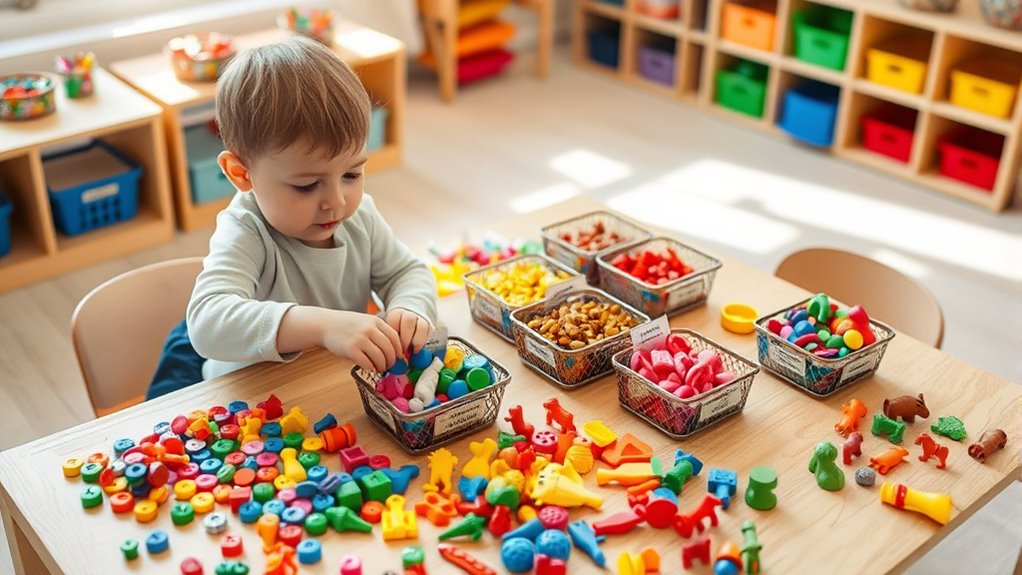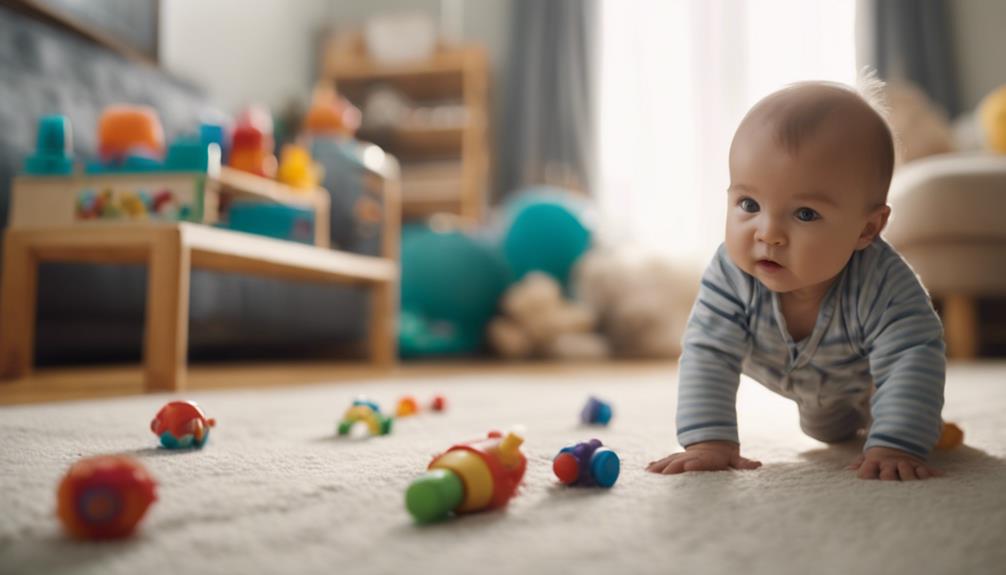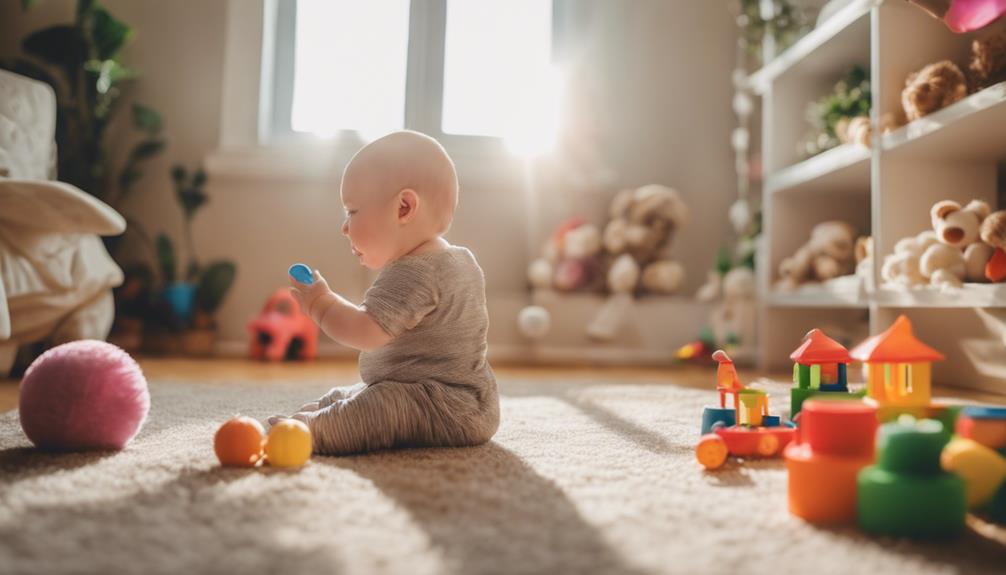To teach sorting skills through play, you can create fun activities that involve matching objects by color, shape, or size. Use everyday items like buttons, beads, or toy animals to encourage children to categorize and compare. Make activities interactive and playful by turning them into games or challenges. Incorporating these methods helps children develop visual discrimination, critical thinking, and decision-making skills. Keep exploring for more ideas to make sorting engaging and meaningful.
Key Takeaways
- Use colorful objects like buttons or beads to engage children in sorting by color, shape, or size.
- Incorporate playful games and timed challenges to motivate children to practice sorting skills.
- Introduce multi-category sorting tasks to develop more complex classification and pattern recognition.
- Integrate sorting activities into daily routines to reinforce organizational and decision-making skills.
- Use hands-on, interactive activities to promote active learning and enhance understanding of grouping concepts.

Have you ever wondered how computers efficiently organize and pair data? Behind the scenes, algorithms use processes similar to the way children learn to match and sort objects. When teaching sorting skills, especially to young learners, you can harness the power of play to make the process engaging and effective. One of the most fundamental skills is color recognition, which forms the foundation for more complex categorization tasks. By incorporating color recognition into categorization games, you help children develop their ability to identify similarities and differences among objects, setting the stage for more advanced sorting skills. For example, using colored blocks or cards, you can encourage children to group items by color, fostering their visual discrimination and attention to detail. These activities are not only fun but also build critical thinking as children decide which objects belong together based on their color.
Categorization games are a fantastic way to make sorting an interactive experience. You can supply a variety of objects—such as buttons, beads, or toy animals—and ask children to sort them into groups based on specific attributes like color, shape, or size. As they do this, you’re helping them understand the concept of classification, which is essential for later academic skills like reading and math. These games also promote language development, as you can introduce new vocabulary related to colors or categories, encouraging children to articulate their sorting choices. The key is to keep the activities playful and hands-on, allowing children to experiment with different ways to organize objects. This active engagement sparks curiosity and reinforces their understanding of how grouping items by shared features simplifies information processing.
You can also introduce variations to keep children interested. For instance, challenge them to sort objects into multiple categories simultaneously—like grouping by both color and shape—so they begin to grasp more complex classification systems. As they become more confident, you can turn sorting into a game where they race to complete tasks or find specific objects based on given criteria. These activities mirror how computers manage data: by recognizing patterns, categorizing based on attributes, and efficiently organizing large sets of information. When children practice categorization through play, they develop an intuitive understanding of these processes, making abstract concepts more concrete. Additionally, mindful decluttering techniques can be integrated into sorting activities by encouraging children to decide which items to keep or discard, fostering decision-making skills. Overall, integrating color recognition and categorization games into learning routines transforms sorting from a simple task into an enjoyable exploration of how the world is organized.
Conclusion
By incorporating matching and sorting into play, you help children develop essential skills that will serve them well beyond their early years. Think of it as planting seeds for a future where they can navigate any digital age with confidence—like a modern Renaissance person. Remember, just as a good pirate always knows his map, your guidance turns simple games into powerful learning adventures that shape their world. Keep playing, keep teaching, and watch them flourish.










